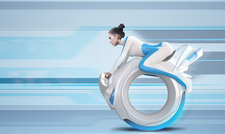What's new in Ubuntu 17.10
Back to the Future

© Lead Image © sellingpix, 123RF.com
Ubuntu is back to the first letter of the alphabet – and back to the Gnome desktop. But you'll also find lots of new stuff in the latest release.
When Mark Shuttleworth announced Ubuntu in 2004, he was extremely passionate about it. Shuttleworth saw the possibility of a third operating system in the consumer space, and many things worked in his favor. Ubuntu managed to create one of the friendliest and most vibrant open source communities.
The success of Ubuntu on the desktop made Shuttleworth even more ambitious about the mobile space, and he thought he could crack the duopoly of iOS and Android with Ubuntu Mobile. He saw a growing trend of smart TVs, and he even felt Ubuntu could offer a platform to TV vendors.
In 2011, Canonical decided Gnome 3 didn't fit into the grand scheme of Ubuntu. The Ubuntu project dropped Gnome Shell (it still used the desktop stack, just not the shell) and created its own shell called Unity that was aligned with Canonical's plans for mobile, tablets, and TVs. At the 2012 Mobile World Congress, Canonical had one of the biggest stalls, where they showcased their technologies.
[...]
Buy this article as PDF
(incl. VAT)
